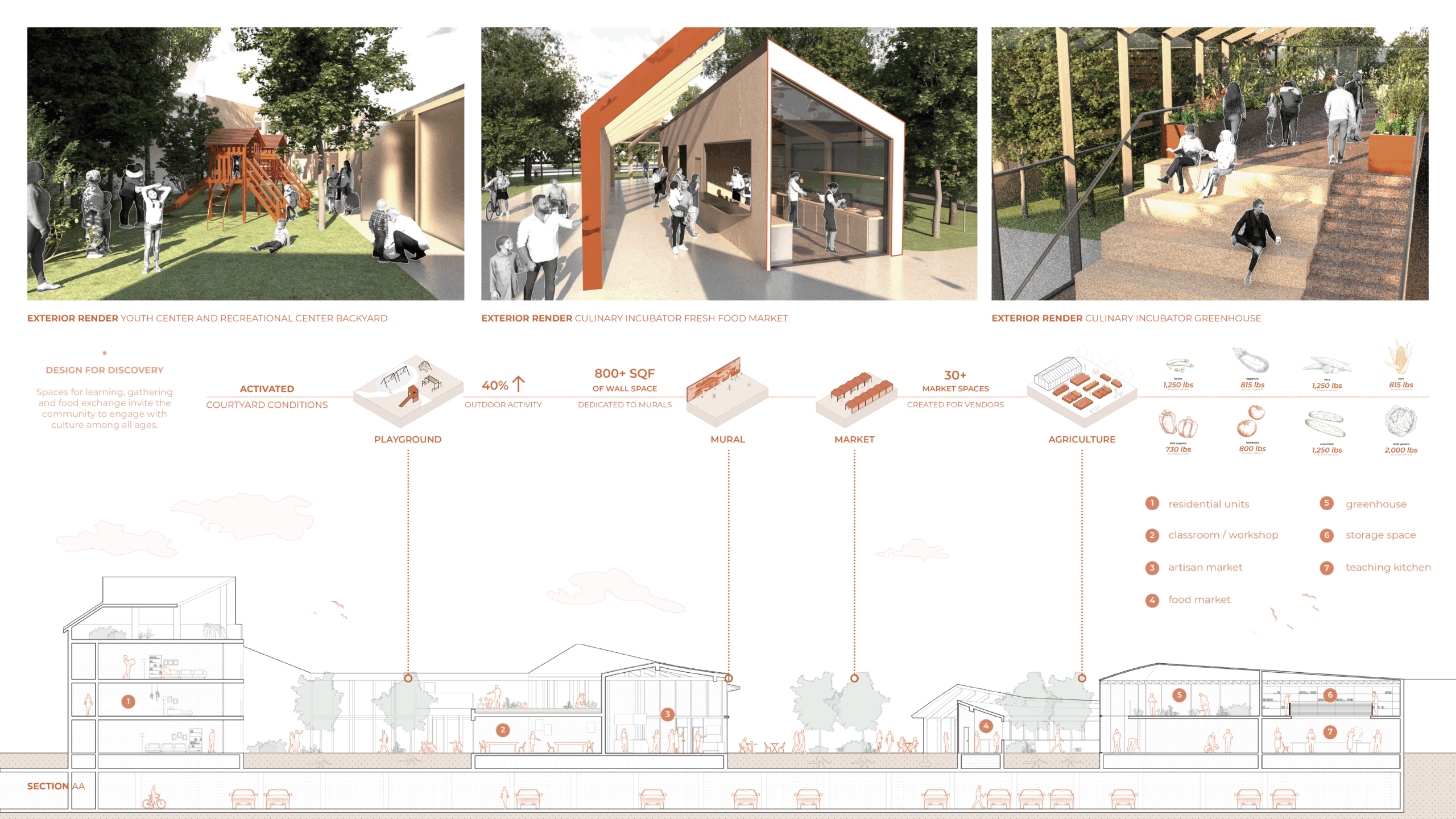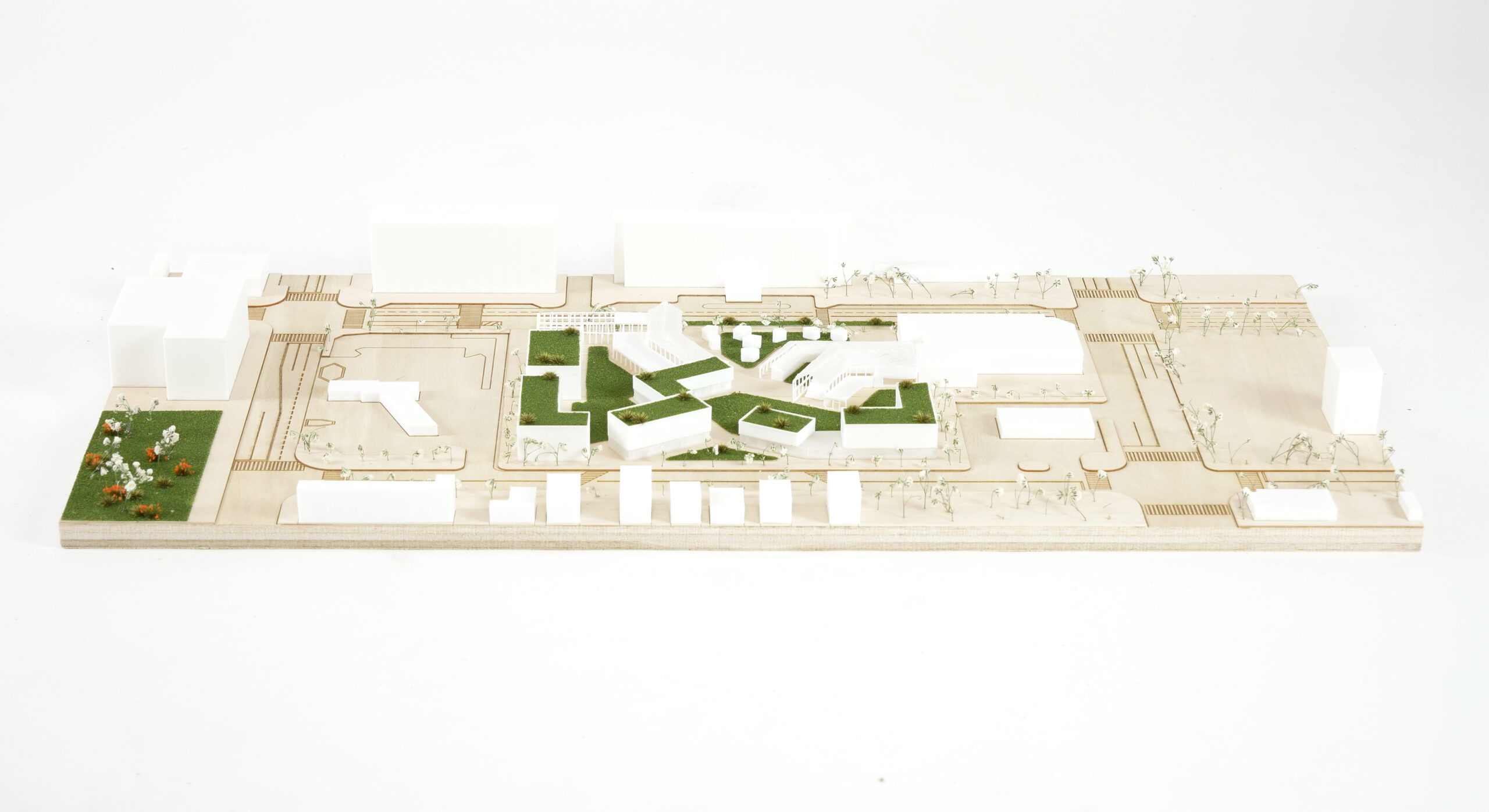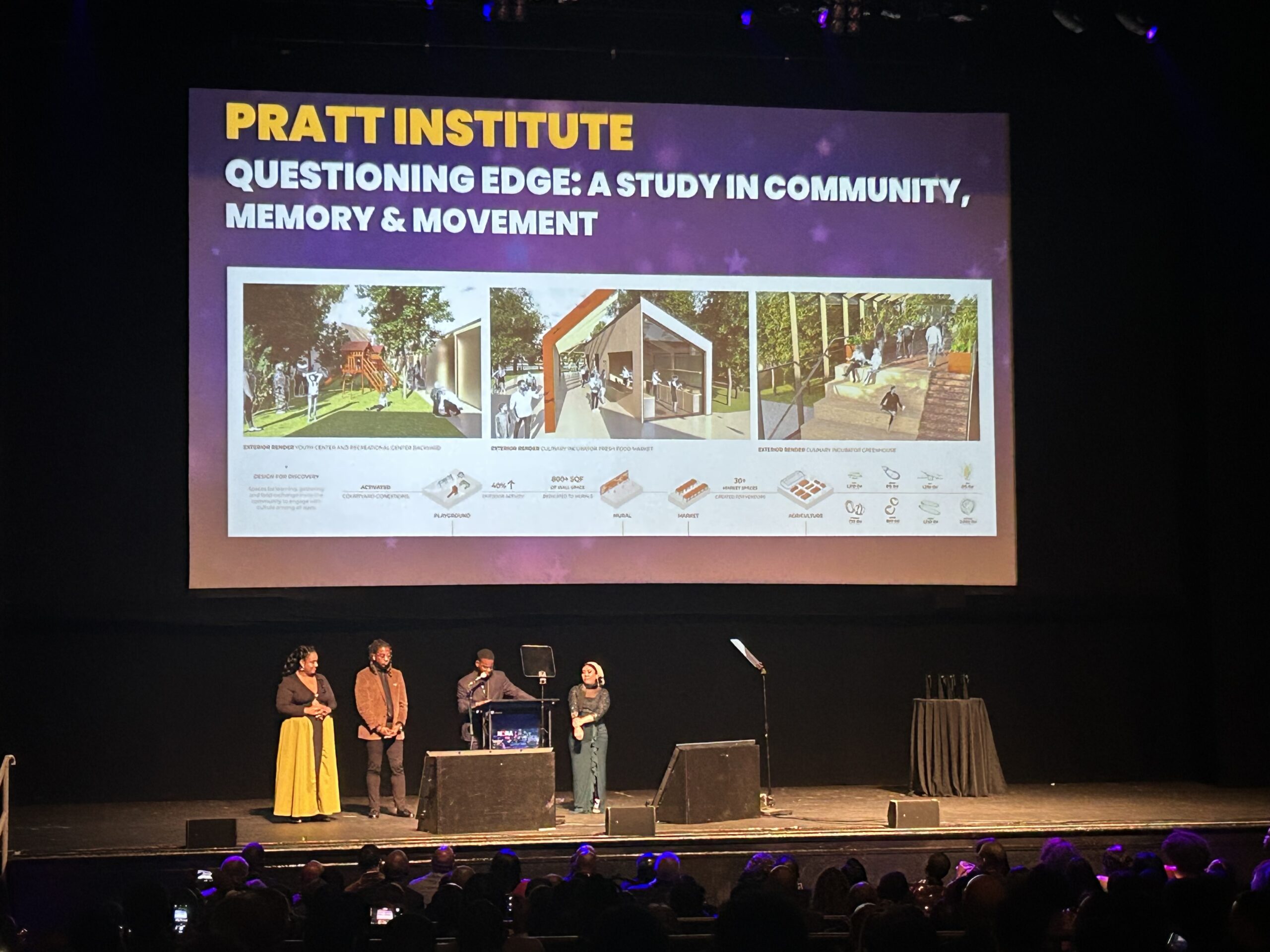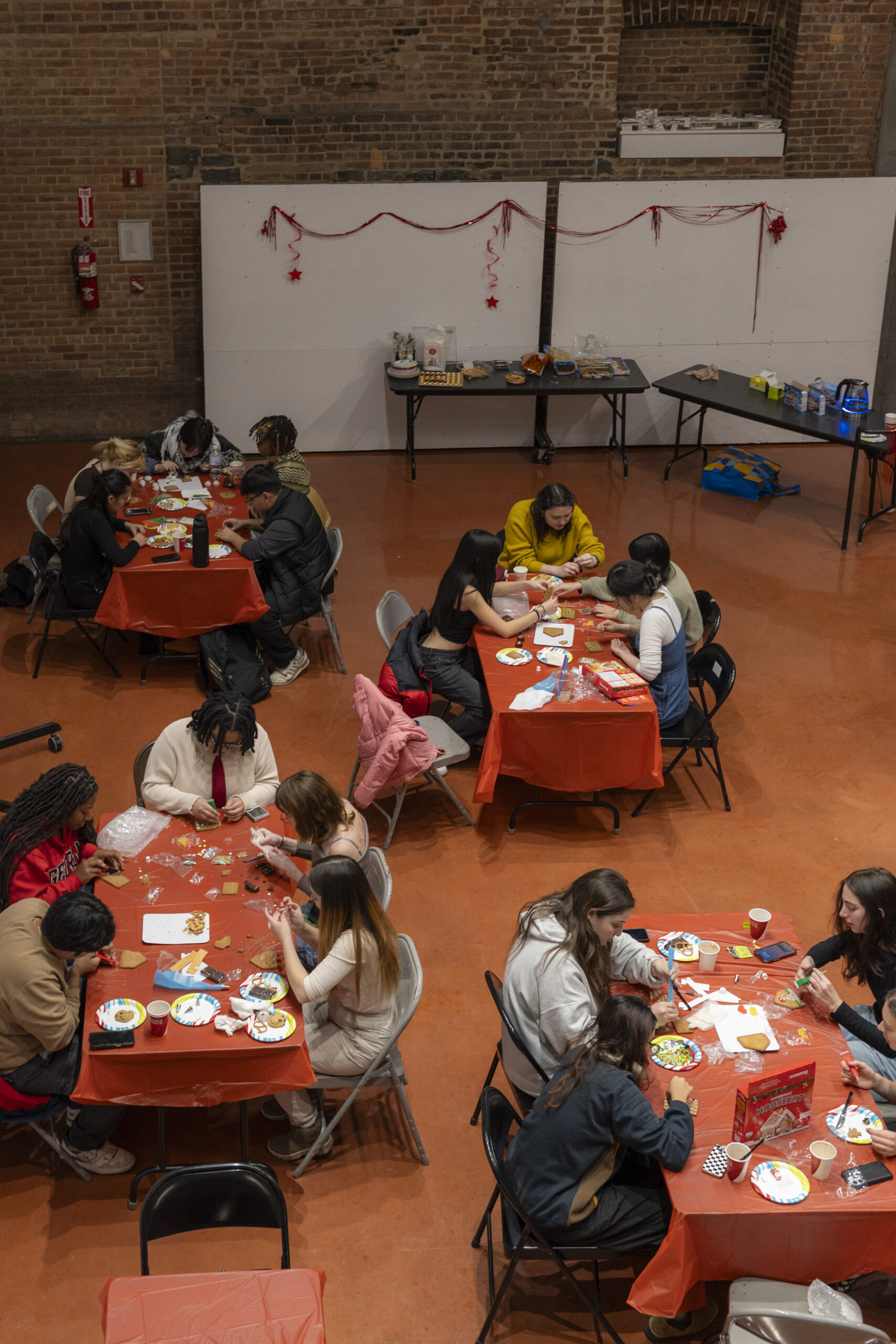For the first time in its history, the Pratt chapter of the National Organization of Minority Architecture Students (NOMAS) competed in the annual Barbara G. Laurie Student Design Competition at the National Organization of Minority Architects (NOMA) conference. The team of undergraduate architecture students traveled to Kansas City, Kansas, this October to present their work after months of creating a comprehensive development proposal focused on community resilience, sustainability, and economic opportunities.
The five-person team—Saddqa Bahidrah, BArch ’27; Ann Denis, BArch ’26; Yeri Kim, BArch ’26; Alexsa Ortiz-Reyes, BArch ’26; and Emily Yuen, BArch 26—was tasked by NOMA with envisioning a mixed-use development for a neglected site in Kansas City, Kansas. Their design proposed a connected “village” with intergenerational housing, a culinary incubator, on-site agriculture, markets, playgrounds, and shared courtyards. Out of more than 40 national entries, they advanced to the final round alongside 15 other schools and received an honorable mention for their project.

“It was a challenging yet rewarding journey, learning how to build multi-programmed generational housing while working with an amazing team,” Kim said. “From sustainability to construction phases, every step was a lesson in collaboration and creativity.”
The Pratt team entered the competition just two months before the first-round submission deadline in July. Balancing the project with summer internships and classes required dedication, but faculty and administration from the School of Architecture offered support throughout. Dean Quilian Riano and Undergraduate Architecture Chair Stephen Slaughter emphasized the importance of grounding the proposal in the reality of Kansas City’s communities.
“We didn’t want our project to feel intrusive,” Bahidrah said. “It needed to be a place families would want to live in, where people could grow together. The highest compliment we got from a juror was that it felt like a place designed for a real community, a place where families would genuinely want to live.”
The team also worked with Academic Director of Construction Management Audrey Schultz on structuring the project feasibility of the proposal and with Visiting Assistant Professor of Undergraduate Architecture In Cho, who expanded their understanding of sustainability.
“We went into the project with this singular idea of what sustainability was—solar panels and rainwater collection, constructing buildings with cross-laminated timber,” Bahidrah said. “But In showed us that sustainability isn’t only about the technical details. Sustainability is also social and economic.”
With this broader lens in mind, the students were inspired to develop a plan to foster community engagement and workforce development, using food as the vehicle. The final presentation included two models, eight boards, and a video, all illustrating their concept and its potential for long-term local impact.




At the conference, students also attended keynotes, office tours, and networking events, including a hackathon hosted by Gensler, a high-energy session exploring the future of education in a world shaped by AI. During the hackathon, students from across the US collaborated, brainstormed, and posed potential solutions to challenges expected to arise by 2040.



Pratt’s NOMAS chapter is already preparing for next year’s competition by recruiting new members and advocating for the project brief to be integrated into studio coursework for greater structure and support.
Outside of the annual conference, the team continues to foster community and career development. The group hosts technical workshops on tools like Rhino software, resume and portfolio best-practice sessions, and social events such as gingerbread house competitions. Peer mentorship is also a key initiative to help members navigate the academic and professional demands of architecture school.

“What I love about NOMA is its energy,” Kim said. “It’s not just an organization, but a space for sharing research, perspectives, and genuine connection. It truly fosters belonging.”
“NOMA feels like a family reunion,” Bahidrah said. “Everyone is there to support you and genuinely connect. That’s what I value the most. This is a people-centered profession, when we invest in each other, the work follows.”
Past NOMA president Pascale Sablan, BArch ’06, recently discussed her career and new book, GREATNESS: Diverse Designers of Architecture, during a talk in Higgins Hall. The full video can be found below.
